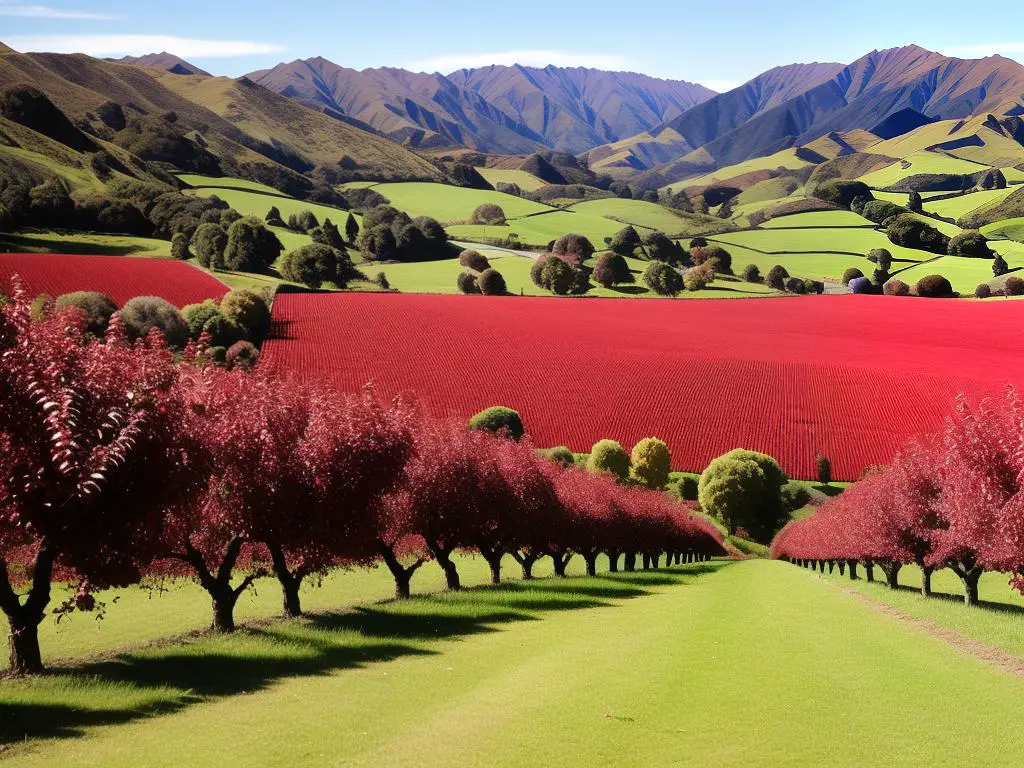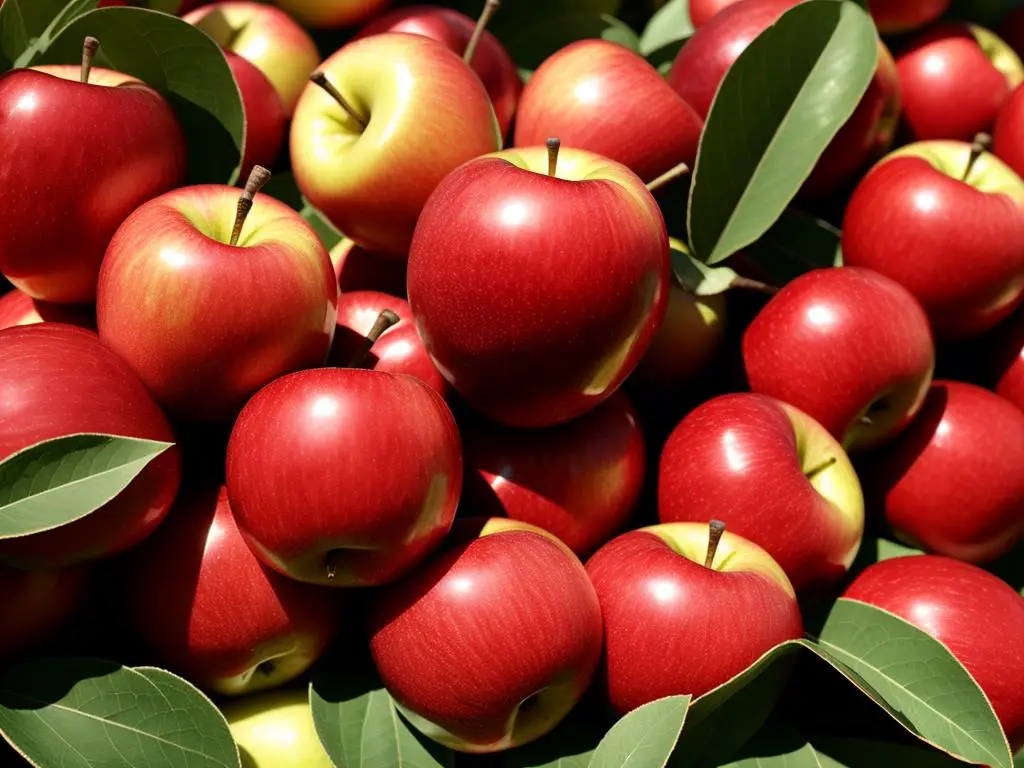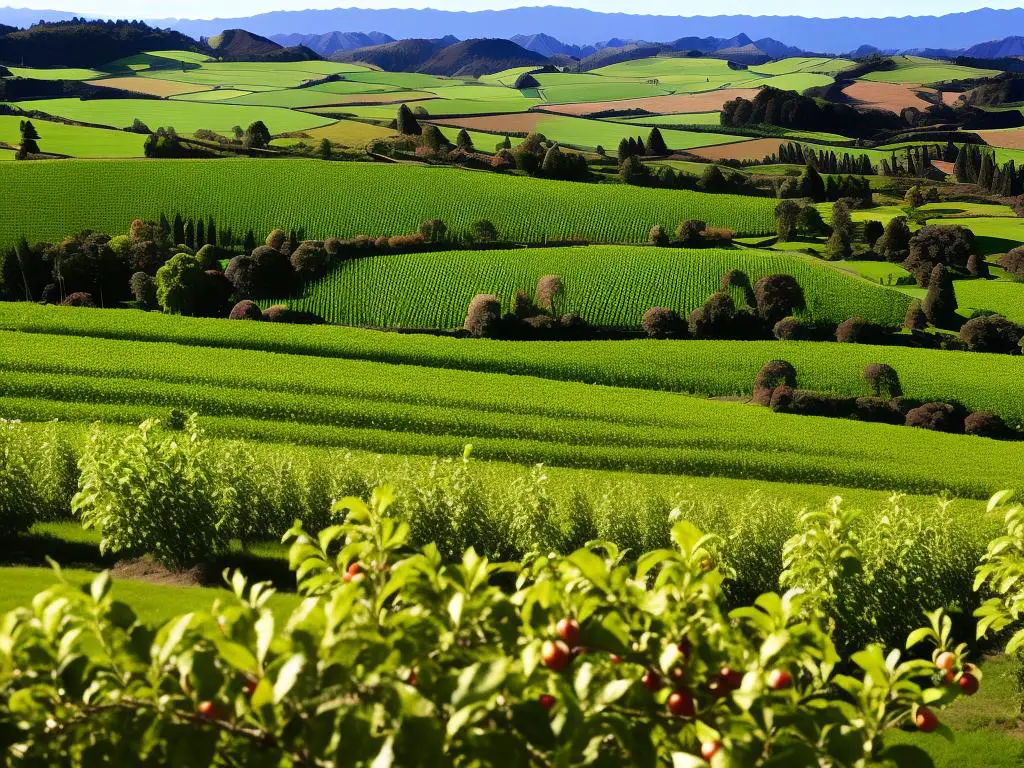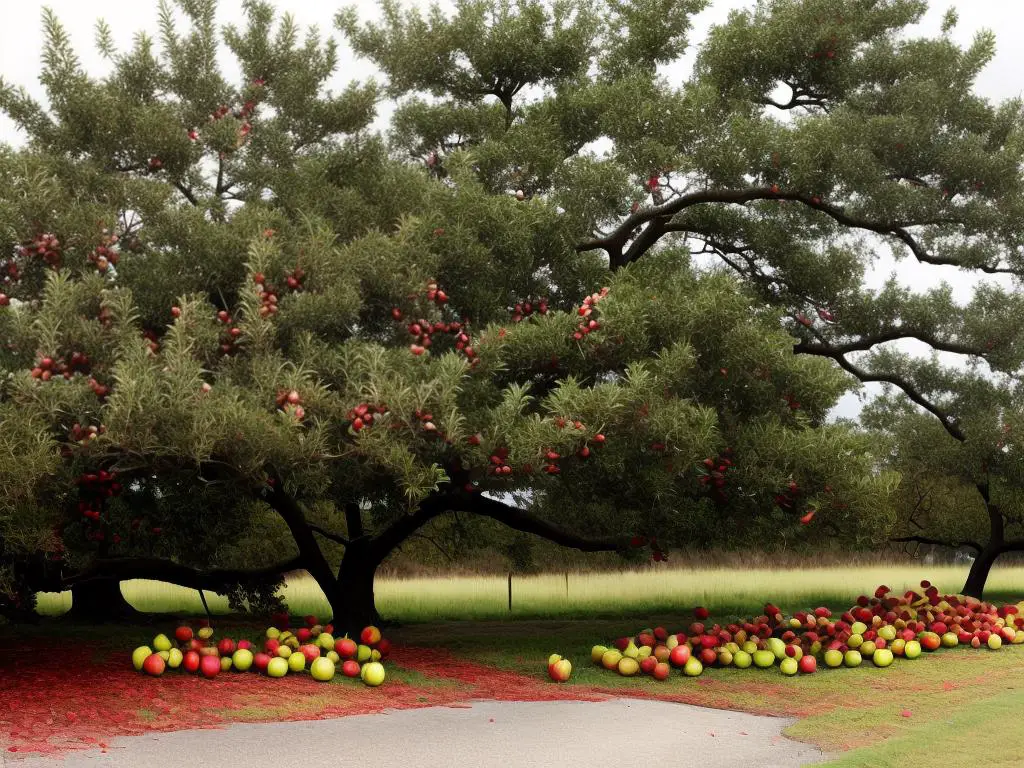Apples are a quintessential fruit, savored not only for their delightful sweet-sour taste but also for their health benefits. While each corner of the world has its own unique cultivation methods and varieties, New Zealand apples stand out in their diversity and quality. The island nation’s unique geography and climatic conditions contribute to the splendid selection of apple varieties grown here, from the early-season favorites like Poppi and Royal Gala to the globally loved Pacific Queen, Jazz, and Envy. This discussion delves into every intricate aspect of the NZ apple industry, from the remarkable harvest season to the evolution in packing and distribution methods, providing a comprehensive picture of New Zealand’s apple landscape.
Apple Harvest Season in New Zealand
New Zealand Apple Harvest Season: A Symphony of Nature and Nurture
The apple harvest season in New Zealand is a magical period that typically unfolds between February and April each year. New Zealand’s unique geography and temperate climate are key factors that contribute to this timing. Positioned in the Southern Hemisphere, New Zealand experiences its warmest months when most regions of the Northern Hemisphere are embracing winter. This well-timed warmth coupled with rich, fertile soils provides the perfect environment for apple trees to grow and bear fruit.
Climate and Apple Variety: The Dynamic Duo
Climate is highly instrumental in determining the apple harvest season. The temperate maritime climate of New Zealand, characterized by warm summers and mild winters, accommodates a broad range of apple varieties. The warmth of summer aids in the maturity of the fruit, while the cool autumn nights help to develop their crisp texture and rich flavors.
The type of apple variety also plays a significant role in the harvest season. Early season apples such as Poppi and Royal Gala tend to ripen faster. Poppi is known for its bright skin and sweet-acidic contrast which lures apple lovers during February and March. Royal Gala, New Zealand’s top apple export, is typically harvested during late February to March. Its cream-colored tender flesh and sweet taste make it a favorite not only domestically but also for international consumers.
The Harvesting Process: A Fine Art
The process of harvesting apples involves a significant level of precision and care. Apples are hand-picked from trees when they are ripe, which is determined by their sugar content, color, and firmness. The timing and method of harvest are crucial to ensure that the apples reach consumers in the best possible condition.
Each apple is carefully selected and removed from the tree by twisting it upwards from the stem, ensuring that the spurs—which produce next year’s crop—are not damaged. Once picked, the apples are quickly moved to paking sheds to protect them from the elements and begin their preparation journey for market.
Quality of New Zealand Apples
New Zealand takes pride in producing some of the world’s highest quality apples. Strict quality standards are observed throughout the cultivation and harvest periods, leading to the production of premium quality fruit. New Zealand apples are popular for their distinct flavors, crispness, and prolonged freshness. The stringent attention to detail, the delicate handling of apples, the ardently followed export grade standards, and the regulated cold storage contribute to the superior quality of New Zealand apples.
In the realm of apple cultivation, New Zealand holds a distinct reputation. The country’s apple harvest season intertwines the perfect harmony of climate, apple varieties and well-coordinated human endeavors, resulting in a universally acclaimed apple experience. This reflects not only the country’s commendable aptitude in apple farming, but also the prolific diversity and superior quality inherent in the New Zealand apple harvest season.

Varieties of New Zealand Apples
Experience the Royal Flavor: Apples from New Zealand’s Pacific Queen Variety
The Pacific Queen apple hold its roots in New Zealand, a natural hybrid born from the Red Delicious and Gala varieties. With an alluring deep-red exterior that hints at the juicy, sweet flesh within, the Pacific Queen is a fan favorite. Its harmonious blend of sweetness and tartness evoke a flavor profile that is undeniably addictive.
These apples usually reach maturity in New Zealand’s fall season, which equates to spring in the Northern hemisphere. This timing places the typical harvesting period in the March to April window. With such an intense, yet delicious flavor profile, the Pacific Queen apple is the perfect choice for raw consumption and adapts beautifully in baking, sauces, and salads too.
Jazz Apples: A Rhythmic Symphony of Flavors
Jazz apples, another stellar variety from the beautiful orchards of New Zealand, represent a fusion of two apple varieties: the classic Royal Gala and the tangy, sweet Braeburn. The outcome of this hybridization is an apple that carries a unique flavor profile – crisp and subtly sweet, with a hint of tartness that tantalizes the palate. Jazz apples feature a beautiful bright red skin with yellow undertones.
The growing season for Jazz apples in New Zealand extends from late summer to early fall, with peak ripeness occurring around April and May. These apples serve as a delightful snacking choice due to their robust flavor profile and are also an excellent addition to salads and pies.
Envy Apples: The Apple of Everyone’s Eye
The name perfectly fits this variety, as Envy apples are truly enviable for their rich flavor, crunchy consistency, and vibrant color. A sleek combination of the Royal Gala and Braeburn varieties, these apples are distinguished by their striking crimson skin and intensely sweet, slightly tart white flesh.
Envy apples ripen fully by late summer to early fall, with harvesting taking place around April and May. These apples stand out in taste and retain their magnificent color even when sliced, making them an ideal choice for salads and fruit platters where aesthetics play a crucial role.
New Zealand apples are celebrated worldwide for their extraordinary taste and superior quality. The secret ingredient? A combination of meticulous cultivation, diligent harvesting, and careful handling. This ensures the apples are at the peak of freshness, crispiness, and taste when they arrive in consumers’ hands. These apples can be enjoyed in a variety of ways, from raw snacks to mouth-watering dishes or scrumptious desserts. Different varieties of New Zealand apples offer a unique tasting profile that guarantees a noteworthy taste experience.

New Zealand’s Apple Orchard Locations
Prime Apple Orchard Locations in New Zealand
Hawke’s Bay: The Apple Growing Powerhouse
When it comes to apple-growing locations, Hawke’s Bay stands tall. Famous for its fertile plains and harmonious climate, the weather in Hawke’s Bay ensures an uninterrupted seasonal cycle that contributes to the high-quality and flavorful apples. The region is a significant contributor to New Zealand’s apple yield, and is home to a rainbow of apple varieties, such as Braeburn, Royal Gala, Fuji, and Granny Smith.
However, like all blessings, Hawke’s Bay’s perfect microclimate for apple growth also presents some drawbacks. The warm temperatures can make the crops susceptible to diseases and pests, making it crucial to have a strong management plan in place to keep the orchards healthy.
Gisborne Apple Orchards
Gisborne, New Zealand’s easternmost city, also boasts prime apple-growing conditions. Well-drained soils and a mild inland climate create an ideal environment for apple cultivation. Particularly famous for its Cox’s Orange Pippin apples, Gisborne produces a significant portion of the apple crop each year.
Despite these favourable conditions, Gisborne orchards require careful irrigation management and frost prevention due to the region’s climate patterns.
Nelson Apple Orchards
The Nelson region, placed on the northern tip of New Zealand’s South Island, is known for its consistent sunshine which in turn provides optimal growing conditions for apples. The fruitful orchards of Nelson primarily grow the Braeburn, Royal Gala, and the uniquely New Zealand ‘Jazz’ apple.
However, the same sunny conditions can also pose a challenge, as they can lead to droughts and water shortages. Growers in the region apply innovative water management practices to maintain the health of the orchards.
A Closer Look at Central Otago’s Apple Orchards
Nestled deep in the southern part of New Zealand, Central Otago’s unique environment is particularly conducive for apple cultivation. While the region is renowned for its cool-climate wines, it also boasts a small but highly-prized crop of apples. Owing to the dry and cool climate of this region, the apple varieties harvested here are known for their crispiness and sweetness along with having a long storage life.
Conversely, this same cool climate leads to a slower ripening season and subsequently, a relatively short harvest window that comes with its own set of challenges.

Impacts on the Apple Industry: Cyclone Gabrielle
How New Zealand’s Apple Industry Persevered Through Cyclone Gabrielle
As a crucial segment of New Zealand’s agricultural economy, the apple industry holds a strong presence, especially in fertile regions like Hawke’s Bay and Gisborne located in the North Island. Here, these apple cultivators regularly overcome typical issues like pests, diseases and fluctuations in annual rainfall. However, the challenge they faced when Cyclone Gabrielle hit was beyond the ordinary. Even in the face of such extreme weather conditions, these growers displayed remarkable resilience, which further exemplifies their tenacity in this industry.
Cyclone Gabrielle and Its Devastation
Cyclone Gabrielle, which hit North Island toward the end of the growing season, damaged apple orchards on an unprecedented scale. The cyclone brought extreme winds, heavy rainfall, and flooding. These extreme weather conditions caused immediate damage to apple trees, resulting in lost crops and compromising the ability of trees to produce healthy fruit in the subsequent seasons.
The apple varieties that were still on the trees during the cyclone were most heavily impacted, with a large percentage of the crops displaying significant water damage and being windblown. Fallen or damaged fruit was unable to be saved due to the rapid onset of rot and other diseases in the damp and windy aftermath of the cyclone, leading to substantial economic loss for the apple growers.
Resilience of Apple Growers in Hawke’s Bay and Gisborne
Despite such losses and challenges, growers in Hawke’s Bay and Gisborne exhibited remarkable resilience in the wake of Cyclone Gabrielle. These regions had to swiftly shift their focus to recovery and adaptation strategies to help their orchards rebound from the storm’s devastation.
One key element of the response was stringent disease and pest control. Fungi and pests thrive in wet, humid conditions left behind by the cyclone, so local growers increased their efforts in this area. A significant number of growers also started implementing orchard re-planting programs, focusing on replacing the most heavily damaged apple trees to ensure future crops.
Another adaptive strategy encompassed the modification of agricultural practices. Rain and winds can quickly erode topsoil, depleting it of the necessary nutrients to maintain apple groves. To mitigate this, many growers increased the use of soil conditioners and organic fertilizers to replenish the vital nutrients lost and protect the soil from future erosive forces.
Charting the Future
New Zealand’s apple industry has consistently demonstrated its remarkable resilience, especially with its recovery following major weather disturbances like Cyclone Gabrielle. Nonetheless, this incident has underlined the susceptibility of farming sectors to the potentially devastating impacts of extreme weather conditions. Therefore, the focus remains on enhanced disaster management, the optimization of farming practices, and the development of weather-resistant apple varieties by dedicated scientists and farmers. Their collective efforts ensure that New Zealand’s apple industry remains hardy and prepared to meet any future weather-related challenges.

Innovation in the Industry: New Packhouse in Hawke’s Bay
Embracing Technology: A Closer Look at Innovation in Hawke’s Bay Packhouse’s Apple Operations
New Zealand’s apple industry is renowned for its innovative approaches to apple growing, harvesting, packing, and distributing. One of the key areas of innovation is the automated packhouse. These state-of-the-art facilities are revolutionizing the way apples are processed and packaged, contributing to the efficiency and productivity of the industry.
The New Packhouse in Hawke’s Bay
A prime example of this innovation is the recent development and utilization of a new packhouse in Hawke’s Bay, a significant apple-growing region in New Zealand. This state-of-the-art packhouse uses sophisticated technology to streamline the apple packing process.
The packhouse is equipped with highly automated machinery and software systems designed to accurately sort, grade, and pack apples at rapid speed. These technologies not only improve the efficiency of packing operations but also enhance the consistency and quality of the packed apples.
Automation and Efficiency
At the heart of this packhouse’s operation is the automation of many traditional manual tasks. Once the apples are harvested, they are transported to the packhouse, where they are cleaned and sorted based on their size, color, and quality. These processes are all handled by automated equipment using high-tech sensors, reducing labor costs and significantly speeding up the packing process.
On top of this, the packhouse uses advanced software programs to manage the distribution of the packed apples, making sure they reach consumers in their freshest state. The automation not only enhances efficiency but also reduces human error and ensures consistency in quality and appearance – highly valued traits in the competitive fruit market.
Impact on the Apple Industry
The technological advancements exhibited in the Hawke’s Bay packhouse illustrate how innovation can drive efficiency in the apple industry. This is particularly important in New Zealand, which is a major exporter of apples and competes on an international stage.
Furthermore, the new packhouse serves to boost the local economy of Hawke’s Bay by creating jobs related to the operation and maintenance of the packhouse, as well as those involved in the technological development and upkeep.
The Future of Apple Packhouses
The state-of-the-art packhouse in Hawke’s Bay is not an isolated case. Similar innovations are taking place across the apple industry in New Zealand and around the world. These advancements are of great importance as the industry seeks ways to keep up with the growing demand for high-quality, consistently-graded, and efficiently-produced apples.
It’s clear that technological innovation in the apple industry is no mere passing trend. Instead, it’s a necessity for the industry’s sustainability and growth. As these advancements continue to evolve, we can expect the industry to become ever more efficient at producing and delivering the best possible apples to consumers.

Weathering through challenging times with the incidence of extreme weather events like Cyclone Gabrielle and capitalizing on technological innovations for streamlined packing and distribution, New Zealand’s apple industry continues to flourish. The variety and quality of apples produced each season are a testimony to the adaptability and resilience of the orchards and their dedicated growers. With every bite of a crisp NZ apple, we experience a blend of the country’s rich soil, careful cultivation, and innovative spirit, indeed a well-rounded taste of Kiwi resilience and ingenuity.
